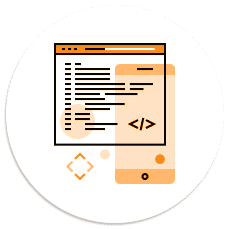A MVP is not to be mistaken by the trophy or medal your child is awarded for giving their all in a local sporting event. In this context, MVP stands for Minimum Viable Product and is a concept that is getting a lot of attention in the entrepreneur community and has been for some time now. But what is a MVP? Why do you need one? How do you go about creating one?
Here’s what you need to know.
What is an MVP?
A Minimum Viable Product or MVP is a concept that was popularized by Eric Ries in his book The Lean Startup where he defines it as the “version of a new product which allows a team to collect the maximum amount of validated learning about customers with the least effort.” As Eric explains in this YouTube video, the objective is to determine the minimum number of features you need to engage with early adopters and to start the learning feedback loop. But, how do you know what the minimum is? As Eric goes on to say, the rule of thumb is to take what you think the minimum is right now and cut it in half and repeat that two more times. This allows you to take the shortest route to deliver value to your customers while simultaneously gaining customer feedback on how to improve your product moving forward.
Why should I create one?
For starters, MVPs help to increase your likelihood of acquiring funding for your business. By presenting your application even at the most basic level you are able to reduce the riskiness of investment and give potential investors a glimpse into what the final product will look like.
Secondly, it saves you money. The cost to build an app can range anywhere from $5k to $500k+ which leaves little margin for error. By limiting the time, money, and energy spent on early development you limit the damage that early pivoting has on the success of your business.
Thirdly, it gets your product out to market early to begin gaining traction with your target market while at the same time giving you real feedback on how you can improve your application in the upcoming updates. By launching a basic version you give your customers time to evaluate your application and provide feedback on what features they would find valuable. This saves time and money that may have been spent developing features that would not delight your target audience.

How do I build an MVP?
- Step One: Identify The Problem
Here is where you want to learn everything you can about your target market including market size, geographics, psychographics, and demographics. The best way to do this is to go out and talk to the people you plan on serving. - Step Two: Spot The Gaps
Once you have learned everything you can about your target audience, you need to learn what exists in the market already. Where are your competitors falling short? Is there a niche market that is underserved? If you find that there are already many other businesses trying to serve this problem it may be a sign that the market is already saturated. - Step Three: Determine What Features To Build
Remember the goal is to minimize how many features you implement in the early stage of development. It is okay to plan what you want to add later on, but let your customers tell you what they want before you add what you think they need. This isn’t the time to be fancy. All you want to do is present them with something that is sophisticated enough that it presents your core components but at the minimum cost. - Step Four: Test
Now that you understand your customers, you have analyzed the competitive landscape, and you created your prototype, it’s time to test. You need to use your time with your customers wisely. This isn’t the time to put on your sales hat and convince them they need your app. Your job is to listen and take notes on your customer’s feedback. Try to keep them talking by asking questions such as “why do you feel that way?”, “what would make it better?”, or “how do you feel about XYZ?” - Step Five: Head Back To The Drawing Board
It’s time to get back to work and make the necessary adjustments based on your customers’ feedback. Once complete take your app back out to market and begin testing again. You may find the changes you made didn’t completely solve the problem your customers were having. It is a feeling-out process that requires patience and a strong drive to go for the long haul and truly improve the lives of your customers. - Step Six: Build Your MVP & Launch
At this point your application has been tested multiple times and you have reached a point where your core features satisfy and delight your customers. Now is the time to launch your MVP. It will not be the complete vision you have for your idea and that’s okay. It’s important that your application begins serving your customer’s needs early and gaining top of mind status. Moving forward, your goal is to listen to your customers’ feedback good, bad, or ugly and work to improve your app with each update. Before long your product will have the features you imagined, the customer base you hoped for, and the market share you dreamed of.
Vertical Motion Inc. is a Calgary & Kelowna-based business supporting the needs of entrepreneurs and business owners since 2006. Our team of expert business specialists, project managers, front and back-end developers, marketers, graphic designers, and professional advisors support the needs of both B2B and B2C businesses in all industries including Blockchain, Cryptocurrency, Clean Technology, Augmented and Virtual Reality (AR/VR), Sports and Recreation, Real Estate, and Health Care. We specialize in creating custom Web, iPhone, Android, and Windows solutions for businesses of all sizes including startups, small businesses, not-for-profit organizations, and large corporations. Ready to take your idea to new heights? Drop us a line
Not quite ready yet? Sign up for our monthly newsletter for relevant business articles, Vertical Motion blogs, and our business Q & A. Have no fear we are spam clear! 🚀
External Resources Consulted:
https://asperbrothers.com/blog/mvp-app-development/
https://www.productboard.com/glossary/minimum-viable-product-mvp/
https://www.smashingmagazine.com/2019/07/mvp-app-development/
https://www.agilealliance.org/glossary/mvp/#q=~
https://www.techopedia.com/definition/27809/minimum-viable-product-mvp

Written By Tyler Mikitka, communications officer on the bridge at Vertical Motion.
